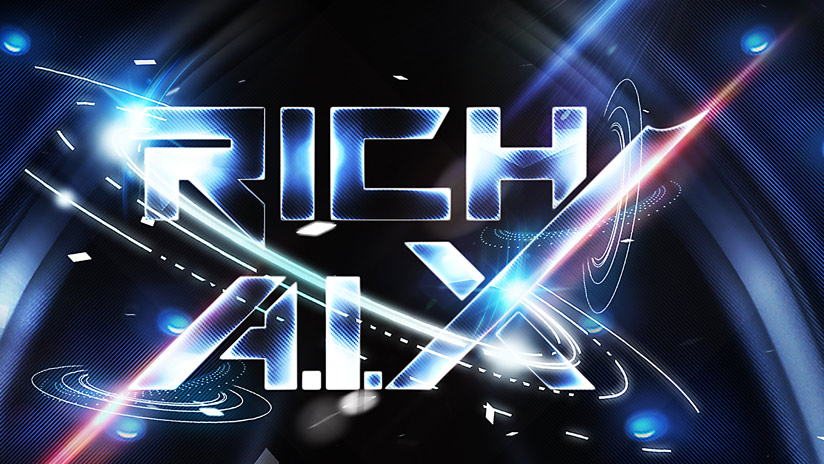What is Generative AI? How does it work? ||#genai #generativeai
Generative AI: A Game-Changer for Creativity and Innovation
Generative AI is a cutting-edge branch of artificial intelligence that enables machines to create new content by learning from vast amounts of existing data. Unlike traditional AI, which typically identifies patterns and makes predictions, generative AI has the ability to produce original outputs like text, images, music, videos, software code, and even 3D designs. This technology powers tools that mimic human creativity and has applications in many industries, from entertainment to healthcare.
How Does Generative AI Work?
Generative AI relies on advanced models and techniques to generate new content. These models learn from large datasets and use algorithms to produce content that is coherent and contextually relevant. Here are some key methods used in generative AI:
Generative Adversarial Networks (GANs): GANs are a type of deep learning model where two neural networks—the generator and the discriminator—work together. The generator creates new data, while the discriminator evaluates its authenticity. The two networks compete to improve each other, which leads to highly realistic outputs like images and videos.
Transformer Models: Commonly used in Natural Language Processing (NLP), transformer models like OpenAI's GPT (Generative Pretrained Transformer) excel at generating text. They predict the next word in a sentence based on the input given, which allows them to produce coherent and contextually appropriate text. This is what powers chatbots, virtual assistants, and content generation tools.
Diffusion Models: These models are used to generate images from noise. They gradually refine random patterns into clear and detailed images, producing high-quality visual content that can be indistinguishable from human-made artwork.
Why Does Generative AI Matter?
Generative AI is revolutionizing industries by automating creative tasks, boosting productivity, and inspiring innovation. Here are some key ways it’s being applied:
Content Creation: Writers, marketers, and businesses use generative AI to generate articles, blogs, social media posts, and advertisements. It helps reduce the time spent on content creation and allows for highly personalized communication.
Design and Art: Artists and designers are using AI tools to assist in creating visuals, logos, and digital artwork. This technology helps unlock creative potential and allows for faster production.
Healthcare: In medicine, generative AI is used for tasks like drug discovery, medical imaging, and even the creation of personalized treatment plans, enhancing the ability to deliver tailored healthcare solutions.
Gaming: Video game developers use generative AI to create complex characters, storylines, and environments, improving the overall gaming experience.
Marketing and Business: Companies use AI-generated content for targeted marketing, customer personalization, and improving user experiences across digital platforms.
The Ethics of Generative AI
While generative AI offers numerous benefits, its rapid development raises significant ethical concerns:
Copyright and Intellectual Property: The creation of content that closely resembles existing works can lead to disputes over ownership and copyright infringement.
Misinformation: Deepfakes and fake news are created by generative AI, which can mislead or deceive the public.
Bias and Fairness: AI models can inherit biases from their training data, leading to discriminatory outputs.
Security and Misuse: The potential for generative AI to be used for harmful purposes—like creating fake identities or malicious code—necessitates strict oversight and regulation.
Looking Ahead
Generative AI holds enormous potential to transform industries, enhance creativity, and solve complex problems. However, its growth needs to be carefully managed with responsible practices and regulatory frameworks to mitigate risks and ensure that the technology is used ethically. By balancing innovation with caution, we can harness generative AI’s full potential while avoiding its misuse.
For a deeper dive into the latest advancements and challenges in generative AI, refer to sources like MIT Technology Review and Wired
MCKINSEY & COMPANY
MIT TECHNOLOGY REVIEW
.
Artificial Intelligence, Generative Models, Deep Learning, Machine Learning, GPT, GANs, Diffusion Models, Creativity, Innovation, AI Tools, Content Creation, Ethical AI
Hashtags:
#GenerativeAI #ArtificialIntelligence #MachineLearning #DeepLearning #AIInnovation #ContentCreation #AIFuture #GANs #GPT #AIArt #TechInnovation #AIRevolution #EthicalAI
Would you like more tailored examples or insights about its applications?
#Whatisgenerativeai #howdoesitwork #generativeai #generativeaiforbeginners
Generative AI: A Game-Changer for Creativity and Innovation
Generative AI is a cutting-edge branch of artificial intelligence that enables machines to create new content by learning from vast amounts of existing data. Unlike traditional AI, which typically identifies patterns and makes predictions, generative AI has the ability to produce original outputs like text, images, music, videos, software code, and even 3D designs. This technology powers tools that mimic human creativity and has applications in many industries, from entertainment to healthcare.
How Does Generative AI Work?
Generative AI relies on advanced models and techniques to generate new content. These models learn from large datasets and use algorithms to produce content that is coherent and contextually relevant. Here are some key methods used in generative AI:
Generative Adversarial Networks (GANs): GANs are a type of deep learning model where two neural networks—the generator and the discriminator—work together. The generator creates new data, while the discriminator evaluates its authenticity. The two networks compete to improve each other, which leads to highly realistic outputs like images and videos.
Transformer Models: Commonly used in Natural Language Processing (NLP), transformer models like OpenAI’s GPT (Generative Pretrained Transformer) excel at generating text. They predict the next word in a sentence based on the input given, which allows them to produce coherent and contextually appropriate text. This is what powers chatbots, virtual assistants, and content generation tools.
Diffusion Models: These models are used to generate images from noise. They gradually refine random patterns into clear and detailed images, producing high-quality visual content that can be indistinguishable from human-made artwork.
Why Does Generative AI Matter?
Generative AI is revolutionizing industries by automating creative tasks, boosting productivity, and inspiring innovation. Here are some key ways it’s being applied:
Content Creation: Writers, marketers, and businesses use generative AI to generate articles, blogs, social media posts, and advertisements. It helps reduce the time spent on content creation and allows for highly personalized communication.
Design and Art: Artists and designers are using AI tools to assist in creating visuals, logos, and digital artwork. This technology helps unlock creative potential and allows for faster production.
Healthcare: In medicine, generative AI is used for tasks like drug discovery, medical imaging, and even the creation of personalized treatment plans, enhancing the ability to deliver tailored healthcare solutions.
Gaming: Video game developers use generative AI to create complex characters, storylines, and environments, improving the overall gaming experience.
Marketing and Business: Companies use AI-generated content for targeted marketing, customer personalization, and improving user experiences across digital platforms.
The Ethics of Generative AI
While generative AI offers numerous benefits, its rapid development raises significant ethical concerns:
Copyright and Intellectual Property: The creation of content that closely resembles existing works can lead to disputes over ownership and copyright infringement.
Misinformation: Deepfakes and fake news are created by generative AI, which can mislead or deceive the public.
Bias and Fairness: AI models can inherit biases from their training data, leading to discriminatory outputs.
Security and Misuse: The potential for generative AI to be used for harmful purposes—like creating fake identities or malicious code—necessitates strict oversight and regulation.
Looking Ahead
Generative AI holds enormous potential to transform industries, enhance creativity, and solve complex problems. However, its growth needs to be carefully managed with responsible practices and regulatory frameworks to mitigate risks and ensure that the technology is used ethically. By balancing innovation with caution, we can harness generative AI’s full potential while avoiding its misuse.
For a deeper dive into the latest advancements and challenges in generative AI, refer to sources like MIT Technology Review and Wired
MCKINSEY & COMPANY
MIT TECHNOLOGY REVIEW
.
Artificial Intelligence, Generative Models, Deep Learning, Machine Learning, GPT, GANs, Diffusion Models, Creativity, Innovation, AI Tools, Content Creation, Ethical AI
Hashtags:
#GenerativeAI #ArtificialIntelligence #MachineLearning #DeepLearning #AIInnovation #ContentCreation #AIFuture #GANs #GPT #AIArt #TechInnovation #AIRevolution #EthicalAI
Would you like more tailored examples or insights about its applications?
#Whatisgenerativeai #howdoesitwork #generativeai #generativeaiforbeginners











